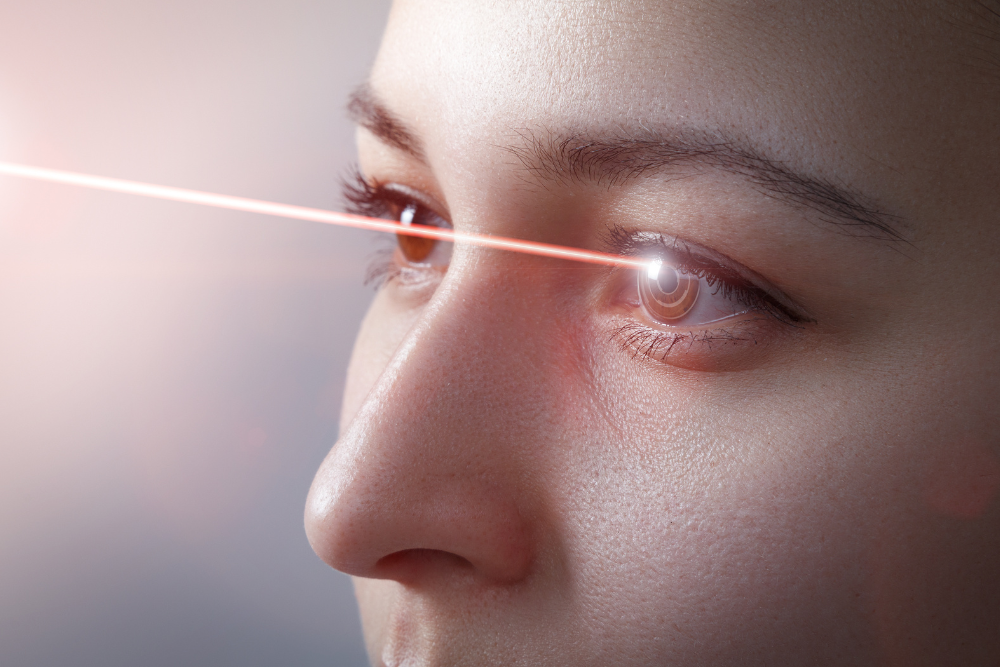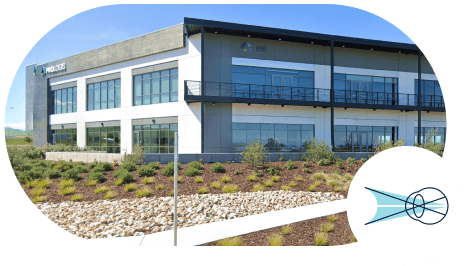The Role of Laser Treatments in Retinal Care

Did you know?: While the first laser debuted in 1960, Albert Einstein was theorizing about the technology in 1917.
Today, laser technology is one of our most common and powerful tools to treat retinal diseases and prevent blindness. That’s because a laser produces a focused light ray that can precisely target tissue. Different types of lasers treat eye diseases, but only a few are used for the retina. At Retinal Consultants Medical Group, we generally use a thermal laser. Its uses include sealing retinal tears, destroying abnormal blood vessels, stopping leaking capillaries, as well as managing macular edema (i.e. swelling) and tumor growth.
Main Laser Treatments and Uses in Retinal Care
Panretinal photocoagulation (PRP)
Panretinal photocoagulation (PRP) is a treatment that is applied to the peripheral retina, the area responsible for side and night vision. PRP is often recommended to combat neovascularization, which is when abnormal blood vessels grow within the eye. If untreated, these abnormal blood vessels can cause severe and permanent vision loss or even blindness. PRP effectively and safely reduces these risks, particularly in patients who suffer from diabetic retinopathy and retinal vein occlusion complications.
Focal laser treatment
The macula (the retina’s central portion) enables your eye to perform central vision tasks, like seeing faces and reading. Diabetes or retinal vein occlusions (blocked blood vessels) can damage the eyes’ blood vessels, causing blood and other fluids to leak near the macula, as well as macular edema. But focal laser treatment reduces additional vision loss risk.
Quick and painless, this treatment is considered one of the safest procedures. It won’t improve further vision loss, but only help stabilize or control existing retinal complications. Additional treatment may be required over your lifetime. You may also experience the appearance of spots, often in your peripheral vision. These spots typically disappear, although they may (rarely) become permanent.
Photodynamic therapy (PDT)
We use photodynamic therapy (PDT) to activate medications that help stop abnormal blood vessel growth. It’s effective for such retinal conditions as wet age-related macular degeneration. A light-activated drug, Visudyne, is injected into the bloodstream and travels to the abnormal vessels. We then use a painless low-energy laser to activate the drug. PDT both closes the damaged vessels and minimizes damage to healthy retina tissue. Multiple courses are often necessary, as the abnormal blood vessels frequently return.
What Laser Treatments Entail
The lasers used for retinal issues, which are different from those used for laser vision correction and cataract surgery, can be applied several times, especially with chronic concerns. While effective alone, they may be combined with other therapies, such as intraocular injections or PDT.
While safe and effective, laser treatment may only slow or prevent your further vision loss, rather than improving vision. Depending on the treatment, there may be side effects, such as the appearance of spots in your field of vision. Multiple treatments may be required to control your eye disease.
At Retinal Consultants Medical Group, most of our laser treatments are performed in the clinic by our retinal specialists. Afterward, you may quickly notice eye changes, or they could take several months. Your doctor will arrange follow-up evaluations to monitor your response. But regardless of the treatments’ effectiveness, controlling your diabetes, high blood pressure, and cholesterol levels are the best ways to maintain your eye health.
Laser treatment offers a safe, proven method to slow or prevent retinal vision loss. For advanced retinal care in Northern California, contact Retinal Consultants Medical Group to discuss your best treatment regimen.


